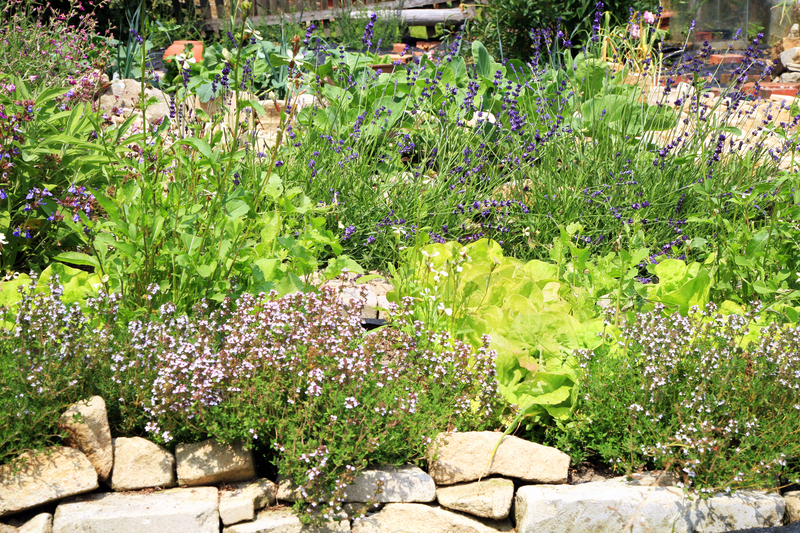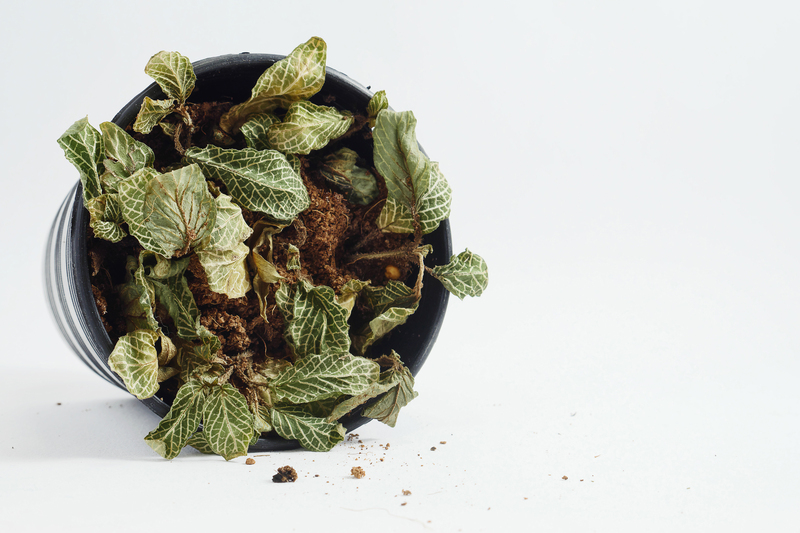Breathing New Life into Soil with Organic Waste
Posted on 28/06/2025
Breathing New Life into Soil with Organic Waste
In today's world, the importance of healthy, fertile soil cannot be understated. As urbanization, intensive agriculture, and industrialization put immense pressure on our natural resources, rejuvenating soil quality is more crucial than ever. Breathing new life into soil with organic waste is a sustainable, effective method that not only restores soil health but also promotes a flourishing environment. In this comprehensive article, we explore how recycling organic waste can transform depleted land into productive soil, ensuring future food security and environmental resilience.
What is Organic Waste?
Organic waste refers to any biodegradable material that comes from living plants or animals. This includes kitchen scraps, yard trimmings, agricultural residues, manure, and even untreated wood. Unlike inorganic materials such as plastics or metals, organic wastes decompose naturally, returning essential nutrients to the earth.
- Food leftovers (fruit and vegetable peels, eggshells, coffee grounds, etc.)
- Grass clippings and fallen leaves
- Animal manure and bedding
- Hedge trimmings and wood chips
- Agricultural by-products (straw, husks, etc.)

Why Nourishing Soil with Organic Residues is Essential
*Fertile soil is the backbone of plant life and agricultural productivity.* However, many modern farming techniques and increased land use have led to soil degradation. Reintroducing organic materials into the soil replenishes lost nutrients, enhances structure, and boosts microbial biodiversity. This natural process helps to restore soil vitality, making it more productive and sustainable.
Key Benefits of Using Organic Waste for Soil Renewal
- Enriches soil fertility: Organic matter contains nitrogen, phosphorus, potassium, and micronutrients essential for plant growth.
- Improves soil structure: Adding organic residues enhances aggregation, aeration, and water retention capacity, reducing flood risks.
- Boosts biological activity: Organic inputs feed soil microbes, worms, and insects which play vital roles in decomposition and nutrient cycling.
- Reduces landfill pressure: Recycling kitchen and yard waste keeps organic materials out of dumps, cutting greenhouse gas emissions.
- Promotes sustainable agriculture: Using on-farm waste to nourish fields closes nutrient loops and supports resilience against climate change.
How Does Organic Matter Restore Soil Health?
Integrating organic refuse back into the earth is a natural process that mimics forest floor decomposition. When organic waste decomposes, it transforms into humus--a dark, nutrient-rich substance crucial for soil structure and fertility. Here's how this process breathes new life into depleted soils:
1. Decomposition and Nutrient Release
Beneficial bacteria and fungi break down organic wastes, releasing nutrients in forms accessible to plants. The process is slow and steady, ensuring a long-term supply of essential elements vital for growth.
2. *Enhancing Soil Texture and Structure*
As organic matter decomposes, it binds soil particles together, improving aeration and water infiltration. This is especially beneficial in clay-heavy or sandy soils, creating an ideal habitat for roots and beneficial organisms.
3. Boosting Soil's Water Retention Capacity
Soils rich in organic matter act like natural sponges, absorbing and holding moisture. This reduces irrigation needs and helps crops withstand drought.
4. Encouraging Soil Life
Earthworms and microorganisms thrive in soils enriched with organic residues. Their activity creates nutrient-rich channels, further improving soil structure and plant health.
Practical Methods for Breathing New Life into Soil with Organic Waste
There are a variety of ways to recycle organic waste and infuse soils with nutrients and vitality. Below, we discuss some of the most effective and accessible approaches:
Composting: Turning Waste into Black Gold
Composting is the most popular method for converting organic leftovers into a nutrient-packed soil amendment. Whether you're composting at home or on a larger commercial scale, the basics include:
- Balancing green and brown materials: Greens (kitchen scraps, lawn clippings) are rich in nitrogen, while browns (dead leaves, woody materials) add carbon. A good mix ensures a healthy compost pile.
- Moisture management: Compost piles need to be slightly damp, like a wrung-out sponge, to support decomposition.
- Aeration: Turning the compost pile regularly helps supply oxygen to microbes and accelerates the process.
- Patience: Well-managed compost is ready in 2-6 months and can be spread over gardens and fields to revitalize soil.
Vermicomposting: Harnessing the Power of Worms
*Vermicomposting* uses earthworms to break down food waste and produce worm castings, a potent organic fertilizer. This process is especially suitable for small-scale or urban gardeners and yields a high-quality by-product that breathes new life into tired soils.
Green Manuring
This method involves growing specific crops (like legumes, clover, or buckwheat) and then plowing them into the soil before maturity. These 'green manure' crops fix nitrogen from the air and rapidly increase soil organic matter when decomposed, enhancing long-term soil health.
Mulching with Organic Materials
Applying a layer of organic mulch (grass clippings, straw, or leaf litter) on top of the soil:
- Reduces evaporation and conserves moisture
- Suppresses weeds naturally
- Provides a steady influx of nutrients as it decomposes
Direct Application of Agricultural Waste
On farms, unprocessed residues such as straw, husks, or manure can be layered onto soil or incorporated into the earth. While this method requires management to prevent nutrient imbalances or odor, it is a simple way for farmers to close the nutrient loop and revitalize working lands.
Organic Waste: A Key Player in Circular Agriculture
Agricultural systems are undergoing a revolution, with circularity--a model that recycles resources--as the gold standard for sustainability. Integrating organic waste recycling into agriculture supports this vision by:
- Closing the loop between consumption and production
- Reducing dependence on synthetic fertilizers, which often have environmental downsides
- Encouraging biodiversity in and above the soil
The Environmental Impact: Why Recycling Organic Matter Matters
Breathing new life into soil with kitchen scraps and green waste is not only beneficial for farmers and gardeners, but also for our planet as a whole. Here's why:
Reducing Landfill Waste and Methane Emissions
When organic remains are tossed into landfills, they break down anaerobically (without oxygen), generating methane--a greenhouse gas over 25 times more potent than carbon dioxide. Diverting these materials to composting or on-farm recycling slashes emissions and mitigates climate change.
Safeguarding Waterways
Soil rich in organic matter acts as a filter, reducing runoff, trapping pollutants, and keeping rivers, lakes, and coastal areas cleaner. Preventing nutrient loss from fields protects aquatic habitats and drinking water supplies.
Enhancing Biodiversity
Healthy, organic-rich soil supports an incredible diversity of microbes, fungi, insects, and other life forms. This web of life sustains plants and animals--creating habitats, recycling nutrients, and helping ecosystems recover from stressors like drought or disease.
Organic Waste in the Urban Setting
Cities generate hundreds of millions of tons of organic refuse annually. Transforming this waste into fertile soil amendments is not only environmentally essential, but also has social and economic benefits:
- Creates green jobs and supports local economies
- Reduces urban heat by revitalizing parks and gardens
- Empowers communities to grow their own food and beautify their neighborhoods
Best Practices for Home Gardeners & Farmers
To get the most out of organic waste and ensure the health of your garden or fields:
- Avoid contaminants: Only use organic materials free from pesticides, herbicides, or pathogens.
- Compost properly: Achieve higher temperatures for pathogen kill-off and quicker decomposition.
- Balance application rates: Over-applying fresh manure or compost can overwhelm plants or leach nutrients into waterways. Use soil testing to guide application levels.
- Rotate crops and residues: Different crops contribute varying materials to the soil; rotation prevents depletion of specific nutrients and disrupts pest cycles.
Challenges and Solutions in Utilizing Organic Waste
While utilizing organic residues to rejuvenate soil is highly beneficial, some challenges remain:
- Odors and pests: Proper compost management, layering, and aeration can minimize unpleasant smells and pests.
- Disease risks: Composting at adequate temperatures neutralizes pathogens, while avoiding meat or dairy in home compost bins further reduces risk.
- Contaminants: Urban and industrial wastes may contain heavy metals or chemicals; sourcing clean feedstock is essential for safe soil enrichment.

Innovative Approaches to Organic Soil Enrichment
Modern science is unlocking new ways to harness the power of organic residues:
- Biochar: This carbon-rich product, made by burning organic material at low oxygen, helps soil retain nutrients and sequesters carbon for centuries.
- Anaerobic digestion: Organic waste is broken down in sealed tanks, generating renewable biogas for energy and liquid fertilizer for fields.
- Precision composting: Data-driven systems tailor compost blends to specific soil or crop needs, optimizing results and reducing waste.
Conclusion: A Greener Future Through Organic Waste Recycling
The journey of breathing new life into soil with organic waste is as old as agriculture itself. Today, as ecological pressures mount, returning biodegradable remains to the land is both a practical solution and an ecological necessity. *From small home gardens to expansive farms and bustling cities, everyone can play a role in turning waste into wealth for the soil, the environment, and future generations.* By embracing composting, green manuring, mulching, and innovative recycling techniques, we foster soils that are healthy, productive, and resilient--ensuring that the world's fields and gardens continue to nourish life for centuries to come.
Let us work together to revitalize our planet's most precious resource--healthy, living soil--by making the most of every banana peel, grass clipping, or autumn leaf. In every handful of rich, dark soil lies the power to create a more sustainable and bountiful future, all thanks to organic waste recycling.

